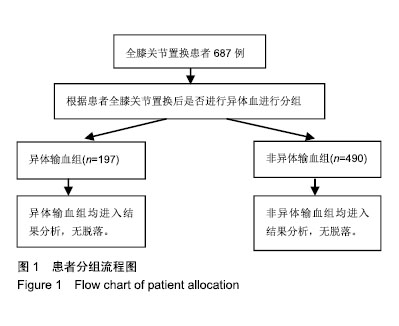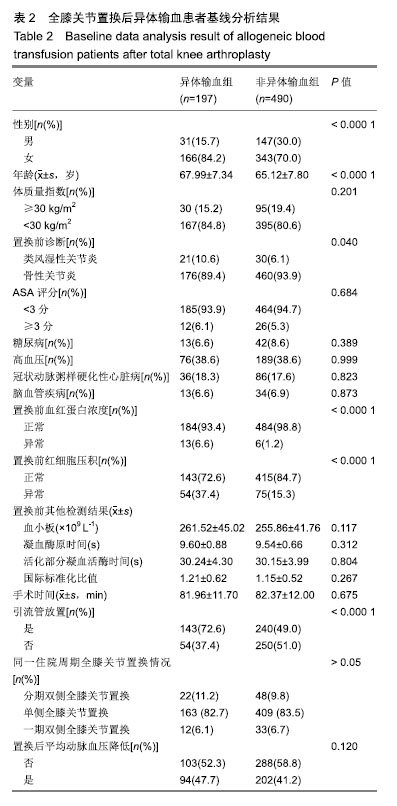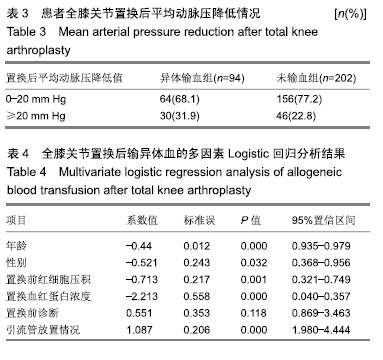| [1]Lin C, Qi Y, Jie L, et al. Is combined topical with intravenous tranexamic acid superior than topical, intravenous tranexamic acid alone and control groups for blood loss controlling after total knee arthroplasty: A meta-analysis. Medicine (Baltimore). 2016;95(51):e5344. [2]Ma J, Sun J, Guo W, et al. The effect of platelet-rich plasma on reducing blood loss after total knee arthroplasty: A systematic review and meta-analysis. Medicine (Baltimore). 2017;96(26):e7262.[3]Tian P, Liu WB, Li ZJ, et al. The efficacy and safety of tranexamic acid in revision total knee arthroplasty: a meta-analysis. BMC Musculoskelet Disord. 2017;18(1):273. [4]Balasubramanian N, Natarajan GB, Prakasam S. Prospective Study to compare Intra-articular versus Intravenous Tranexemic Acid in reducing Post-operative Blood Loss in staged bilateral Total Knee Arthroplasty. Malays Orthop J. 2016;10(3):7-11.[5]Kim YT, Kang MW, Lee JK, et al. Combined use of topical intraarticular tranexamic acid and rivaroxaban in total knee arthroplasty safely reduces blood loss, transfusion rates, and wound complications without increasing the risk of thrombosis. BMC Musculoskelet Disord. 2018;19(1):227. [6]Maniar RN, Kumar G, Singhi T, et al. Most effective regimen of tranexamic acid in knee arthroplasty: a prospective randomized controlled study in 240 patients. Clin Orthop Relat Res. 2012;470(9):2605-2612. [7]Pan JK, Hong KH, Xie H, et al. The efficacy and safety of autologous blood transfusion drainage in patients undergoing total knee arthroplasty: a meta-analysis of 16 randomized controlled trials. BMC Musculoskelet Disord. 2016;17(1):452.[8]Fu Y, Shi Z, Han B, et al. Comparing efficacy and safety of 2 methods of tranexamic acid administration in reducing blood loss following total knee arthroplasty: A meta-analysis. Medicine (Baltimore). 2016;95(50):e5583.[9]Ayd?n BK, Durgut F, Erkoçak ÖF, et al. Other benefits of intra-articular injection of tranexamic acid in primary total knee arthroplasty apart from reducing blood transfusion rates. Eklem Hastalik Cerrahisi. 2017;28(1):25-29. [10]Liu D, Dan M, Martinez Martos S, et al. Blood Management Strategies in Total Knee Arthroplasty. Knee Surg Relat Res. 2016;28(3):179-187.[11]Hogan CA, Golightly LK, Phong S, et al. Perioperative blood loss in total hip and knee arthroplasty: Outcomes associated with intravenous tranexamic acid use in an academic medical center. SAGE Open Med. 2016;4:2050312116637024. [12]Mao Z, Yue B, Wang Y, et al. A comparative, retrospective study of peri-articular and intra-articular injection of tranexamic acid for the management of postoperative blood loss after total knee arthroplasty. BMC Musculoskelet Disord. 2016;17(1):438.[13]任国清,刘红云,滕学仁,等.人工全膝关节置换后是否放置引流管:随机对照试验[J].中国组织工程研究,2016,20(22):3219-3226.[14]李玉翠,范文强,陈海英,等.2012年早期类风湿关节炎分类标准的国内多中心临床验证[J].中华风湿病学杂志, 2017,21(12): 807-811.[15]严建锋,李强,杨宗华.老年关节置换患者体质量指数及血脂水平与围置换期血液管理的相关性[J].中国组织工程研究, 2017, 21(35):5609-5615.[16]彭慧明,翁习生,翟吉良,等.全膝关节置换术围手术期异体输血率及其影响因素[J].协和医学杂志,2014,5(2):135-141.[17]龚科,张琦,董纪元.双侧全膝关节置换术后输血的危险因素分析[J].解放军医学院学报,2016,37(1):43-46,55.[18]Brito SA, Rankin EA, Mcnear M. Acute Blood Loss Anemia in the Octogenarian Total Knee Arthroplasty, Estimated Blood Loss and Transfusions Rates. J Natl Med Assoc. 2016;108(1): 86-89. [19]Mufarrih SH, Qureshi NQ, Ali A, et al. Total knee Arthroplasty: risk factors for allogeneic blood transfusions in the South Asian population. BMC Musculoskelet Disord. 2017;18(1): 359. [20]Yoshihara H, Yoneoka D. Predictors of allogeneic blood transfusion in total hip and knee arthroplasty in the United States, 2000-2009. J Arthroplasty. 2014;29(9):1736-1740. [21]Muñoz M, Ariza D, Campos A, et al. The cost of post-operative shed blood salvage after total knee arthroplasty: an analysis of 1,093 consecutive procedures. Blood Transfus. 2013;11(2):260-271. [22]Cao G, Huang Z, Huang Q, et al. Incidence and Risk Factors for Blood Transfusion in Simultaneous Bilateral Total Joint Arthroplasty: A Multicenter Retrospective Study. J Arthroplasty. 2018;33(7):2087-2091.[23]Hart A, Khalil JA, Carli A, et al. Blood transfusion in primary total hip and knee arthroplasty. Incidence, risk factors, and thirty-day complication rates. J Bone Joint Surg Am. 2014; 96(23):1945-1951.[24]Tió M, Basora M, Rios J, et al. Severe and morbid obesity and transfusional risk in total knee arthroplasty: An observational study. Knee. 2018;25(5):923-931. [25]Li Z, Liu D, Long G, et al. Association of tourniquet utilization with blood loss, rehabilitation, and complications in Chinese obese patients undergoing total knee arthroplasty: A retrospective study. Medicine (Baltimore). 2017;96(49):e9030. [26]Paterson JM, Williams JI, Kreder HJ, et al. Provider volumes and early outcomes of primary total joint replacement in Ontario. Can J Surg. 2010;53(3):175-183.[27]McInnes IB, Schett G. The pathogenesis of rheumatoid arthritis. N Engl J Med. 2011;365(23):2205-2219. [28][28] Koskinen E, Remes V, Paavolainen P, et al. Results of total knee replacement with a cruciate-retaining model for severe valgus deformity--a study of 48 patients followed for an average of 9 years. Knee. 2011;18(3):145-150. [29]Prasad N, Padmanabhan V, Mullaji A. Blood loss in total knee arthroplasty: an analysis of risk factors. Int Orthop. 2007; 31(1):39-44. [30]Boutsiadis A, Reynolds RJ, Saffarini M, et al. Factors that influence blood loss and need for transfusion following total knee arthroplasty. Ann Transl Med. 2017;5(21):418.[31]Sepah YJ, Umer M, Ahmad T, et al. Use of tranexamic acid is a cost effective method in preventing blood loss during and after total knee replacement. J Orthop Surg Res. 2011;6:22. [32]Gao F, Ma J, Sun W, et al. Topical fibrin sealant versus intravenous tranexamic acid for reducing blood loss following total knee arthroplasty: A systematic review and meta-analysis. Int J Surg. 2016;32:31-37. [33]Kosins AM, Scholz T, Cetinkaya M, et al. Evidence-based value of subcutaneous surgical wound drainage: the largest systematic review and meta-analysis. Plast Reconstr Surg. 2013;132(2):443-450.[34]Wang D, Xu J, Zeng WN, et al. Closed Suction Drainage Is Not Associated with Faster Recovery after Total Knee Arthroplasty: A Prospective Randomized Controlled Study of 80 Patients. Orthop Surg. 2016;8(2):226-233. [35]Zhang QD, Guo WS, Zhang Q, et al. Comparison between closed suction drainage and nondrainage in total knee arthroplasty: a meta-analysis. J Arthroplasty. 2011;26(8): 1265-1272. [36]Demirkale I, Tecimel O, Sesen H, et al. Nondrainage decreases blood transfusion need and infection rate in bilateral total knee arthroplasty. J Arthroplasty. 2014;29(5): 993-997. [37]Li C, Nijat A, Askar M. No clear advantage to use of wound drains after unilateral total knee arthroplasty: a prospective randomized, controlled trial. J Arthroplasty. 2011;26(4): 519-522.[38]任国清,刘红云,滕学仁,等.人工全膝关节置换后是否放置引流管:随机对照试验[J].中国组织工程研究,2016,20(22):3219-3226.[39]Roy N, Smith M, Anwar M, et al. Delayed release of drain in total knee replacement reduces blood loss. A prospective randomised study. Acta Orthop Belg. 2006;72(1):34-38.[40]Mutsuzaki H, Watanabe A, Komatsuzaki T, et al. Investigation of perioperative safety and clinical results of one-stage bilateral total knee arthroplasty in selected low-risk patients. J Orthop Surg Res. 2018;13(1):14. [41]Lane GJ, Hozack WJ, Shah S, et al. Simultaneous bilateral versus unilateral total knee arthroplasty. Outcomes analysis. Clin Orthop Relat Res. 1997;(345):106-112.[42]Courtney PM, Melnic CM, Alosh H, et al. Is bilateral total knee arthroplasty staged at a one-week interval safe? A matched case control study. J Arthroplasty. 2014;29(10):1946-1949. [43]Parvizi J, Chaudhry S, Rasouli MR, et al. Who needs autologous blood donation in joint replacement? J Knee Surg. 2011;24(1):25-31.[44]Kamath AF, Austin DC, Derman PB, et al. Saline-coupled bipolar sealing in simultaneous bilateral total knee arthroplasty. Clin Orthop Surg. 2014;6(3):298-304.[45]Kim C, Park SS, Dhotar HS, et al. Topical tranexamic acid reduces transfusion rates in simultaneous bilateral total knee arthroplasty: a retrospective case series. Can J Surg. 2017; 60(5):311-315.[46]Jenny JY, Trojani C, Prudhon JL, et al. Simultaneous bilateral total knee arthroplasty. A multicenter feasibility study. Orthop Traumatol Surg Res. 2013;99(2):191-195. [47]Sheffy N, Bentov I, Mills B, et al. Perioperative hypotension and discharge outcomes in non-critically injured trauma patients, a single centre retrospective cohort study. Injury. 2017;48(9):1956-1963.[48]Yu Z, Yao L, Yang Q. Tranexamic acid plus diluted-epinephrine versus tranexamic acid alone for blood loss in total joint arthroplasty: A meta-analysis. Medicine (Baltimore). 2017;96(24):e7095. |
.jpg) 文题释义:
文题释义:


.jpg)
.jpg) 文题释义:
文题释义: